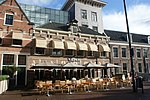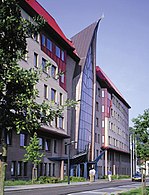Enschede

Enschede (Dutch: [ˈɛnsxədeː] (listen); known as Eanske [ˈɛːnskə] in the local Twents dialect) is a municipality and city in the eastern Netherlands in the province of Overijssel and in the Twente region. The eastern parts of the urban area reaches the border of the German city of Gronau. The municipality of Enschede consisted of the city of Enschede until 1935, when the rural municipality of Lonneker, which surrounded the city, was annexed after the rapid industrial expansion of Enschede which began in the 1860s and involved the building of railways and the digging of the Twentekanaal. The proposal for consolidation began in 1872, per the Tubantia newspaper article on 22 June 1872 that referenced a committee of 5 to oversee a study. They were: J. Mosman (Johannes Theodorus Mosman), H. Fikkert, H. G. Blijdenstein J. Bz., C. C. Schleucker, and G. J. van Heek. In sports and culture, Enschede is known for being home to football club FC Twente, one-time Dutch champions, and the University of Twente. The municipality of Enschede works together in the Twente Region and has been a participant in the EUREGIO, the first regional cross-border partnership in Europe, since its foundation in 1958.
Excerpt from the Wikipedia article Enschede (License: CC BY-SA 3.0, Authors, Images).Enschede
Mooienhof, Enschede
Geographical coordinates (GPS) Address Nearby Places Show on map
Geographical coordinates (GPS)
| Latitude | Longitude |
|---|---|
| N 52.216666666667 ° | E 6.9 ° |
Address
Mooienhof
7511 AB Enschede
Overijssel, Netherlands
Open on Google Maps








